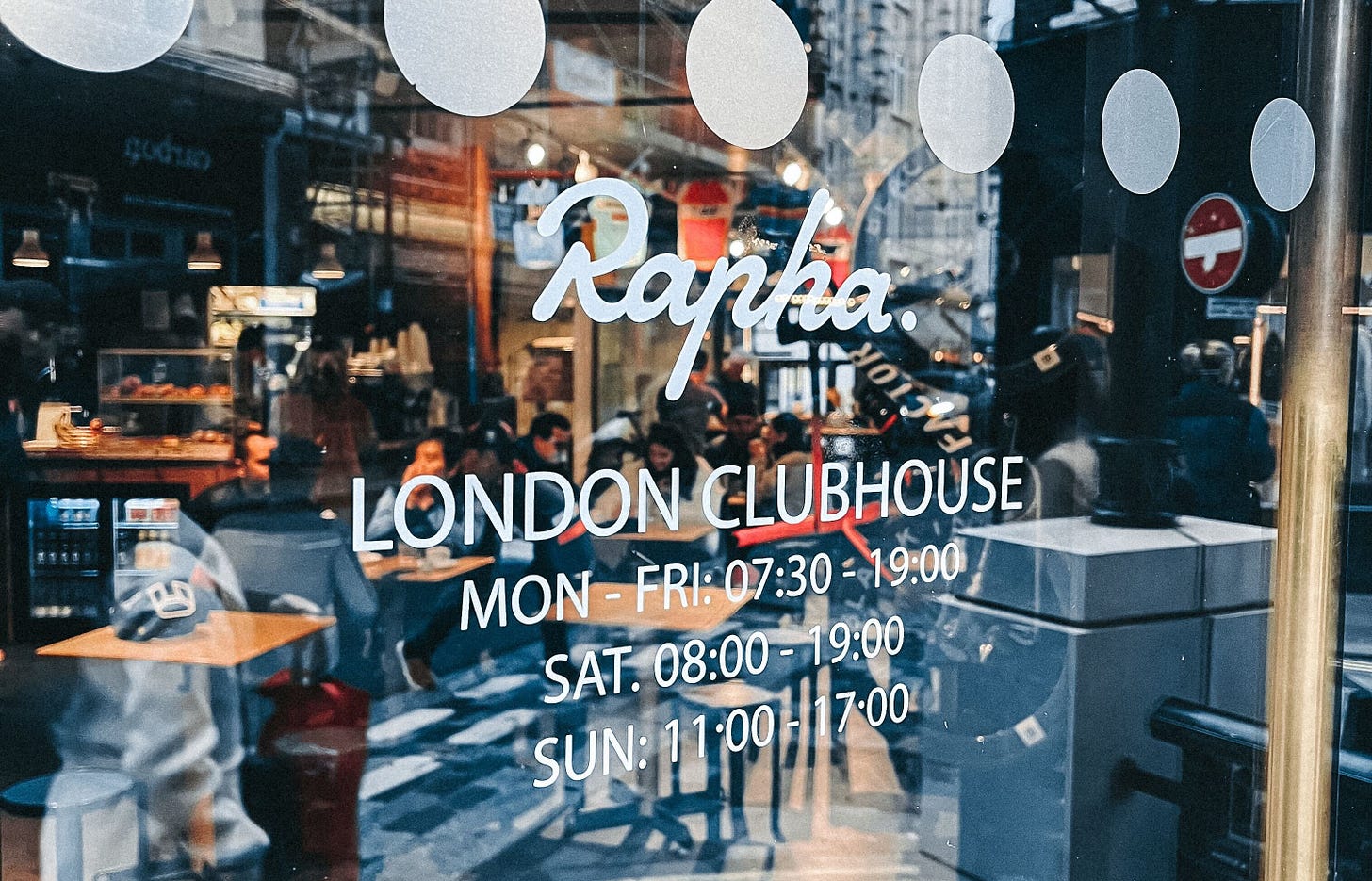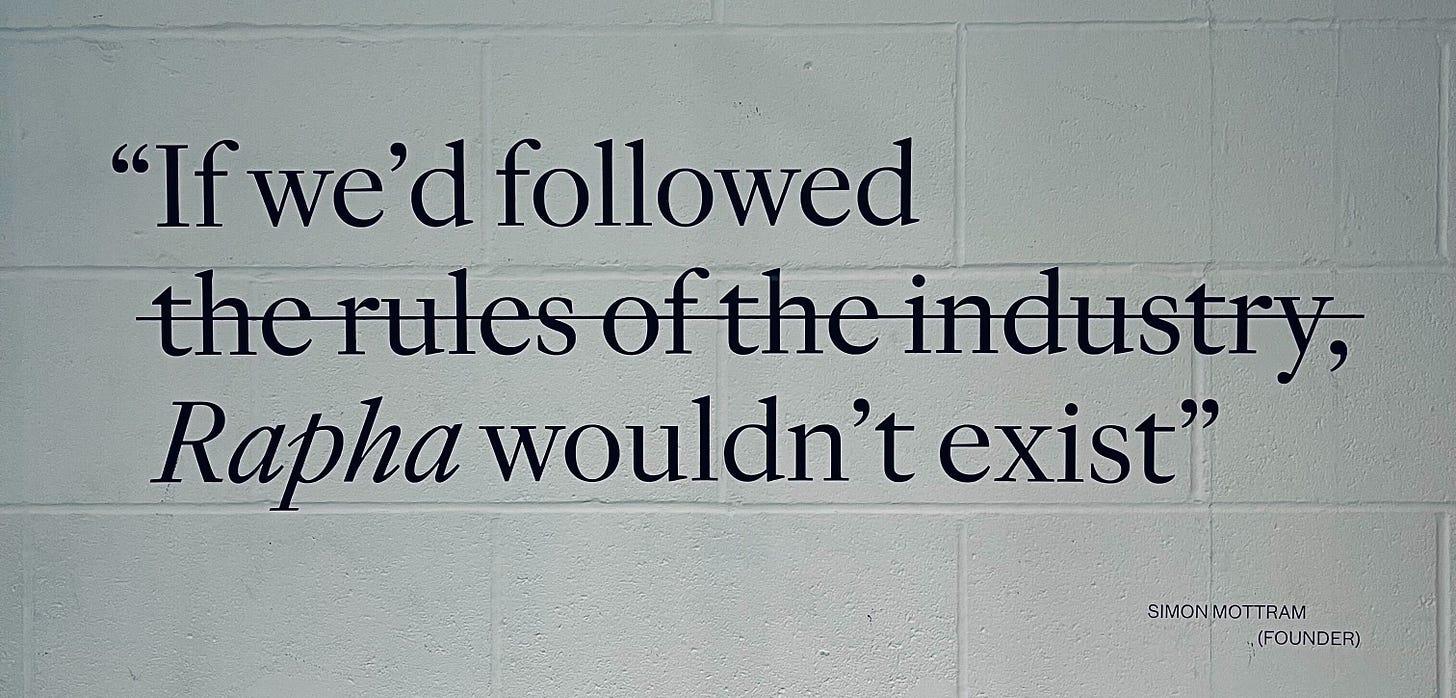Rapha: a community for everyone, or just for some?
A deep dive into how Rapha builds community—and whether exclusivity is the right strategy.
Community Padawans!
You know that feeling when you walk into a space and instantly get it?
Like, oh yeah, this is more than just a store—this is something bigger.
That’s exactly what happened when I stepped into Rapha’s London Clubhouse two weeks ago.
The atmosphere. The history. The sense of belonging. It was all there.
But then, a question hit me.
Can a brand that champions accessibility in cycling also maintain an exclusive membership model?
It’s a tricky balance, one that many brands are navigating right now: How do you build an inclusive community while keeping some doors closed?
Let’s unpack this.
In recent years, brands have been investing in so-called “community hubs” that, in reality, are just retail stores in disguise. A polished concept, but the same old playbook.
Rapha’s Clubhouses, though? They’re different. Here, a community hub is exactly what it claims to be: a space built for the community. Nothing more, nothing less.
Yes, Rapha calls them “stores.” But the moment you step inside, you realize they’re much more than that.
A brand that intrigues
Since diving into the intersection of sports brands, fitness, well-being, and community, I’ve always seen Rapha as a company I could see myself working for. While building The Journey Endurance Club, I devoured every podcast featuring Simon Mottram, Rapha’s founder, trying to understand the steps that shaped the brand.
The disruption in cycling. The mission. The storytelling. The brand experience. The community-first approach. Everything about Rapha resonated with me—and I wanted to bring those elements into the trail running world.
So last week, I finally stepped into a Rapha Clubhouse. In London.
Picture a kid walking into Willy Wonka’s candy shop. That was me.
Now, let’s be clear: I’m not a hardcore cyclist. I don’t follow pro athletes in the sport. But Rapha has a way of creating experiences that pull you in.
First Impressions?
The atmosphere.
Cycling gear everywhere.
People in full kit, their bikes leaning against the walls.
If you’re looking to explore London by bike, this is the place to start. To the left, a wall feels like a Hall of Fame: packed with recommended cycling routes, a true guide to the city’s best rides.
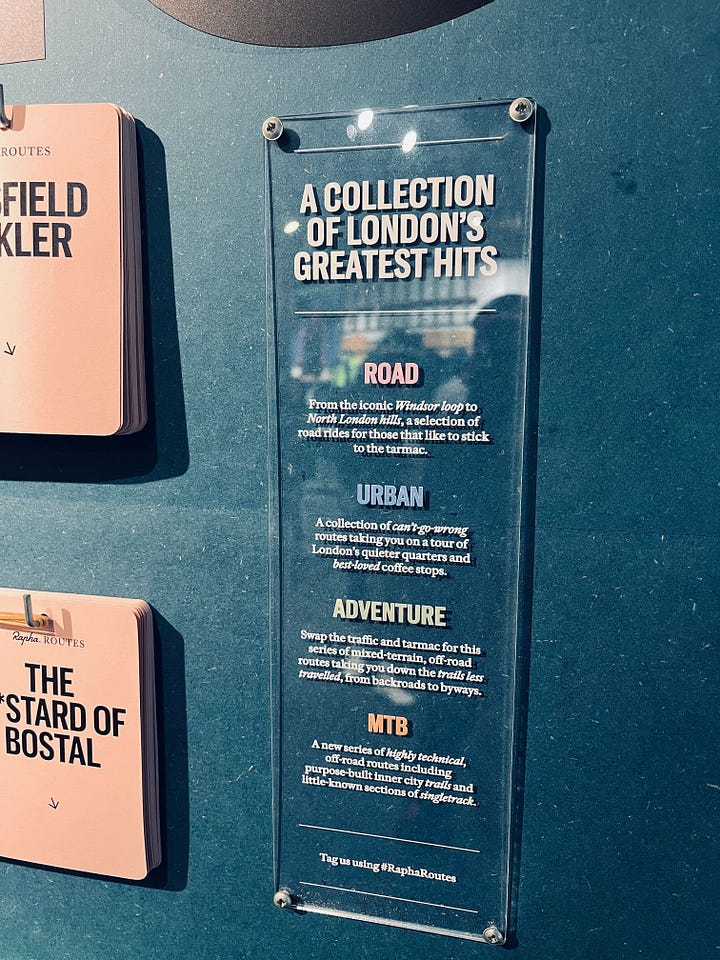
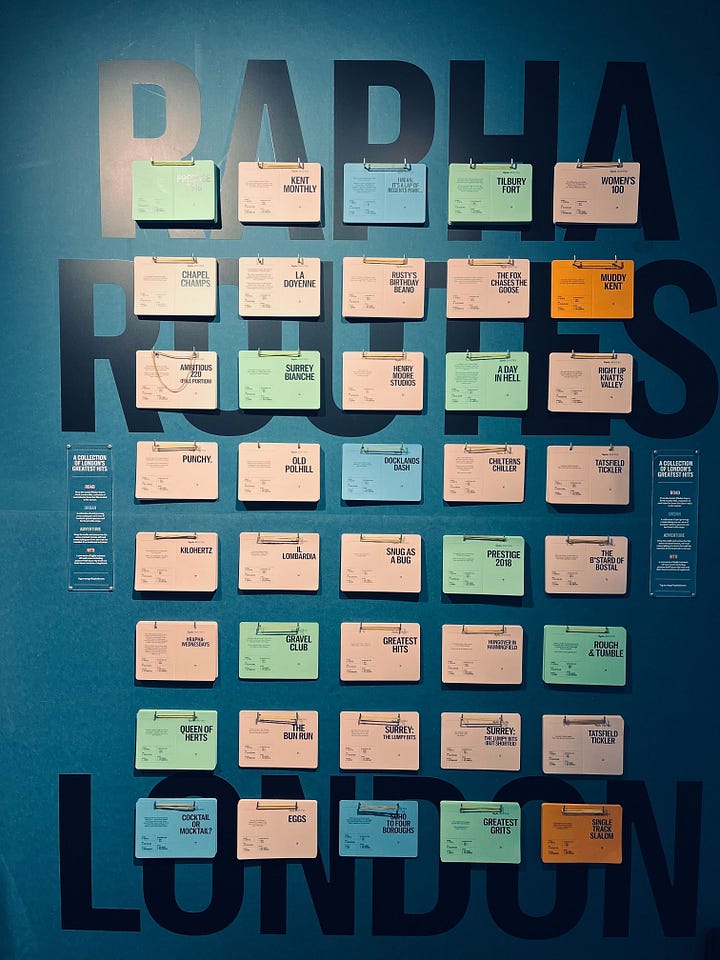
Yes, there’s a section for RCC (Rapha Cycling Club) members, a paid program that raises an interesting question:
Can a brand that promotes cycling accessibility truly balance that with a paywall for its community?
I’ll get to that in a minute. Stay with me.
But first, let’s talk about the space itself: it breathes history.
Photos. Books. Cycling-related quotes scattered throughout. Every detail is carefully curated.
Halfway through my visit, one thought kept running through my mind:
How do I sign up for this?
Had I remembered there was a Clubhouse in London, I probably would have booked a tour. Gotten a behind-the-scenes look. Spoken to the team. Learned more about the RCC’s deeper connection to the brand.
But even in just 5 or 10 minutes inside, one thing became crystal clear:
Rapha doesn’t just sell cycling apparel.
It sells a lifestyle. A culture. A mindset.
The question that lingers
After leaving the Rapha Clubhouse, one thought stayed with me:
Can a brand that champions cycling accessibility truly balance that with a paywall for its community?
This question sits at the heart of how modern sports brands position themselves.
A Community for Everyone—Or Just for Some?
On one hand, Rapha’s mission has always been about bringing more people into the sport. On the other, it operates an exclusive membership model, the Rapha Cycling Club (RCC), which creates a natural barrier to entry.
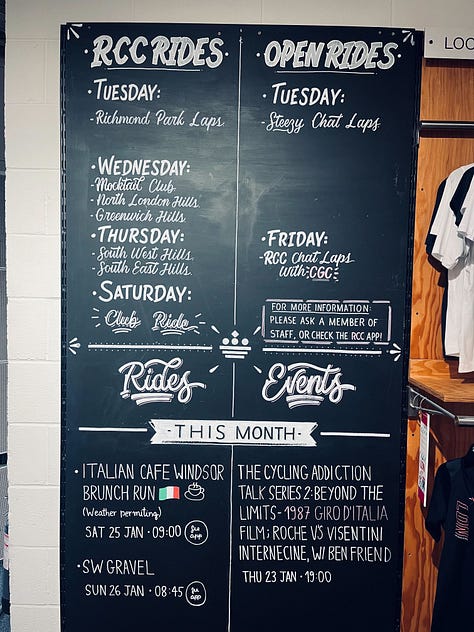
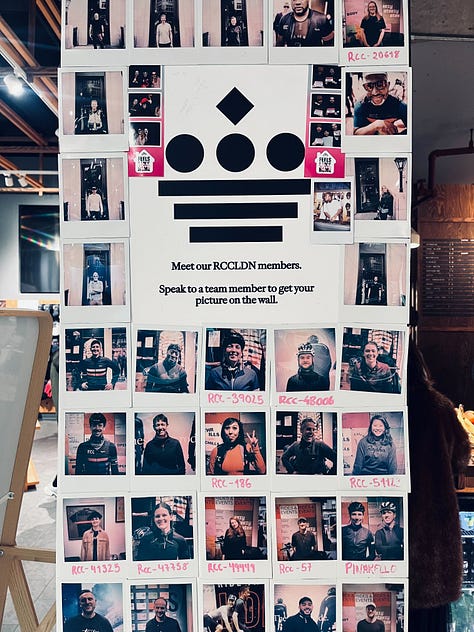

At first glance, this seems contradictory. Shouldn’t a brand that preaches inclusivity avoid exclusivity?
But the more I think about it, the more I realize it’s not so black and white.
The role of exclusivity in community building
Exclusivity isn’t always a bad thing. In fact, it can enhance community value.
People naturally seek spaces where they feel a sense of belonging. Sometimes, having a “members-only” aspect creates stronger bonds. A structured program like RCC gives cyclists curated experiences, organized rides, and a built-in network. Things that aren’t always easy to find on your own.
But here’s the catch: exclusivity, by definition, means not everyone gets in.
Cycling already has accessibility challenges: the cost of bikes, gear, and race fees. Does the sport need another layer of exclusivity?
This is where Rapha sits in an interesting grey area.
They’ve cultivated an aspirational brand: premium, stylish, and performance-driven. But that aspiration comes with a price tag. RCC membership is a financial commitment, and while it offers benefits like club rides, early access to collections, and community events, it naturally raises questions about who gets to participate.
As cycling grows, will Rapha evolve with it? Will it find ways to make its community even more accessible without diluting what makes it special?
It’s a fine balance. And as someone drawn to the intersection of sports, fitness, and community, it’s one I’ll continue to think about.
The reality of cycling accessibility problem
Rapha has made it clear:
Cycling should be open to everyone.
That’s what they state in their 2024 Impact Report.
But here’s the reality: cycling is not a cheap sport.
Neither are Rapha’s products.
To their credit, the brand is working toward greater accessibility.
The Rapha Foundation supports grassroots cycling programs.
Their Search for Speed talent program in the U.S. promotes diversity in cycling.
They aimed for 50% of athletes from underrepresented groups—and exceeded it, reaching 53%.
So the mission seems clear: make cycling more inclusive.
But then, again, there’s the Rapha Cycling Club (RCC).
To be part of it, you need to pay £85 per year. In return, you get:
✔️ An exclusive club kit
✔️ Access to the Club Hire Fleet
✔️ The RCC app
✔️ Free repairs & returns
Which raises the question:
Is this the right strategy for a brand that claims it wants cycling to be “for everyone”?
Accessibility vs. Affiliation: can they coexist?
Rapha has undeniably built one of the strongest communities in cycling. Their Clubhouses serve as meeting points. Their rides connect people worldwide. Their storytelling elevates the sport.
But can a brand claim to democratize cycling while maintaining a gated community?
Maybe the answer isn’t about removing the RCC paywall entirely.
Maybe it’s about ensuring that access to cycling experiences isn’t dependent on membership.
Many of Rapha’s initiatives—group rides, events, and content—are available to everyone. But could they go further?
A better model: from paid to free community
With more cycling brands investing in community, Rapha has a huge opportunity. What if they shifted from a Paid Community to a Free Community, while still keeping certain premium perks behind a paywall?
Yes, RCC membership generates revenue. Moving to a free model would require trade-offs.
But the upside? Massive.
✅ More organic growth → A surge in participation would amplify Rapha’s reach.
✅ Higher brand visibility → More cyclists would engage with the brand.
✅ Improved brand sentiment → Free access aligns better with their inclusivity mission.
And revenue? There are still plenty of ways to monetize:
Exclusive RCC kit sales (which members already pay for).
Paid cycling training programs for those who want structured coaching.
Rapha Cycling Festivals & Challenges, where entry fees support the brand.
Premium event experiences, from guided rides to club-only summits.
Final Thought: transparency & the future of RCC
Rapha is already transparent with their impact reports, which is commendable.
But I’d love to see more data on the actual growth and impact of RCC.
How is it contributing to their community-building goals?
What’s the retention rate?
What feedback are members giving?
One thing is certain:
If inclusivity is the goal, a gated entrance isn’t the best strategy.
And as more brands invest in community, Rapha has a unique chance to redefine what true cycling inclusivity looks like.
Let’s Keep the Conversation Going!
I’d love to hear your thoughts on this:
Can exclusivity and inclusivity truly coexist in a brand-driven community? How do you see brands striking the right balance between access and affiliation?
Are there any brands you admire for building open, thriving communities—without putting up barriers?
Drop a comment below or send me a message. I’m always up for a great conversation about the evolving role of community in branding.
Thanks for reading, and stay tuned for more insights on how brands are shaping experiences that go beyond just selling—toward something bigger, more meaningful, and truly connected.




